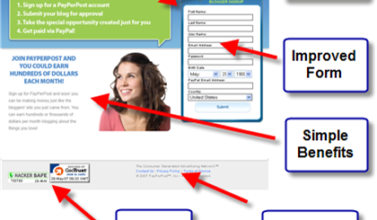
Many businesses know they need a new or updated website but struggle to articulate what they need in terms of website SEO. Customers use search engines to gain access to the internet which means your business’ website must be optimised. Considering that Google’s search engine runs 3.5 billion searches every day, targeting this audience is a real no-brainer. However, getting your website SEO just right requires a strategic and necessary approach regardless of your website’s topic.
The primary goal for a business is to make it as easy as possible for their customers to find them. While paid search works wonders as a short-term solution, especially for specific campaigns, you cannot succeed without effective SEO. This includes on and off-page SEO, keyword research, backlinks and Domain Authority among others.
Website SEO and Design
Website SEO forms part of a design criteria that most websites adhere to for driving traffic from organic web searches. Approximately 75% of all web searches start with Google which means that their algorithms generally dictate how we should create and share website content.
Algorithms (bots) search the internet for informative and mobile-friendly websites with quality content and a high engagement level. Successful companies use effective website SEO strategies to drive organic traffic to help them cement their place on search engine results pages.
Let’s take a closer look at how you can rank higher on Google and stand out from the rest.
1. Balancing Information Density
A general definition of information density is the amount of information in the form of content that greets site visitors when they land on a web page. Creating an SEO-friendly website, first and foremost, requires high-quality, engaging and relevant content. Besides the obvious search results benefits, it will also encourage people to link to you and share your content online.
Greater information density means more content for a visitor which impacts a user’s cognitive load. As a result, it also affects a website’s navigation, usability and overall user experience.
In 2011, Google’s Panda update introduced a new algorithm prioritising websites with rich content instead of simple ‘keywording’ that often encouraged spam.
When designing your website, you should consider how much content your visitor can truly manage without being flooded with information. Too much content means they will take longer to complete certain tasks and page goals whatever they may be. From reading about a new product launch or a new blog article to finding a call to action button, only include necessary and important information.
Always err on the side of caution and don’t be tempted to include loads of information to attract customers. The secret to a user-friendly website is all about moderation and remember that quality always trumps quantity.
2. Seamless Keyword Inclusion
Keywords involve search terms that visitors to your website are likely to enter into search engines when looking for information and websites like yours. “Web crawlers” are algorithms specifically designed to find and rank websites based on keywords, among other things. While web crawler technology has become incredibly advanced, keywords are still vital for those who want to improve their rankings.
The primary goal is to target keywords that could generate the most hits. Long-tail keywords use natural phrases and sentences to target specific niches that effectively increase rankings for certain search queries.
Finding the right keywords for your business can be challenging but think outside the box and keep things simple. Be creative when researching keywords or phrases and always consider search intent rather than actual search terms. Natural phrases or ‘natural language’ also relates to website SEO for voice search.
‘Keyword stuffing’ is also thing of the past and search engines penalise this method. The right way is to seamlessly add the keywords you want to rank for into relevant and interesting content. Always write with people in mind and not computers or algorithms. This way your keywords will make sense within a piece of content instead of randomly adding keywords just for the sake of SEO. It also means more people are likely to click and stay on your page. The longer visitors stay on your page, the better your site will rank.
3. Effective Web Indexing
Organic search traffic is important for growing your website and business but search engines only rank what they can read. In many cases, search engine algorithms tend to miss certain types of content so it’s important to use ALT tags and image descriptions for example. While keywords still matter, Google is more focused on the overall user experience and the user intent. The better you match those, the higher you will rank.
Long-form content is great for website SEO but it can be challenging to balance quality content and user interest. Including too many words on a single page without considering the reader can result in visitors quickly leaving your website. This means a higher bounce rate and less time spent on your site equals poor search engine rankings.
If you want to maximize organic visitors, make sure that you index your website properly. HTML is one of the best ways for web crawlers to find your content, especially when matching or exceeding the 1,890 average word count of Google’s first-page results. Keep readers engaged with interesting content and use images, infographics and lists as they work particularly well.
Here is an excellent article from Neil Patel on “How to Get Google to Instantly Index Your New Website”. It includes a step-by-step process along with loads of valuable information and statistics.
4. Maximise User Engagement
As we mentioned above, Google’s algorithms don’t stop at on-site SEO and indexing as they also look at user engagement. How people interact with your website plays a crucial role in your website rankings. After all, when visitors land on your website, the whole point is that they read, engage and share your content. This could be blog posts, product demonstrations, interacting with web forms and clicking your calls-to-action.
User engagement can greatly affect a site’s ranking position which ultimately encourages web developers to design better websites. It all comes down to creating an interesting, interactive and memorable experience. Types of user engagement include reading and absorbing content, visitor comments and discussions, social sharing, watching videos and viewing images.
Improving user engagement requires careful planning and we’ve listed the top 10 strategies below:
- Faster loading times
- Uncluttered layout with sufficient white space, relevant images and legible font styles and size
- Simple navigation
- Improve link structure using descriptive anchor texts
- Lengthen your text to 1,000-2,500 words
- Break up your content using headings, bulleted lists, images or videos
- Display related content (blogs posts or web pages)
- Implement a chat box for improved customer interactions
- A mobile-friendly or responsive design
- Clear instructions or CTAs (calls-to-action)
These tips should give you a good head start to keep user engagement high but there is more you can do. Some of the best methods to boost customer engagement is to collect email addresses using surveys and questionnaires. Remember to always keep track of visitor engagement scores using Google Analytics or similar SEO tools. Analyse the data, test and make changes to your website if needed for optimal results.
5. Design With Mobile In Mind
With more than half of all web traffic coming from mobile devices, websites can no longer ignore the mobile market. In order to remain competitive, it is vital to consistently show up as high as possible in mobile search results. A website that renders poorly on mobile devices can easily result in lower search engine rankings. This includes several factors from load speed, Metadata to above the fold content and bounce rate among others.

Mobile-friendliness is hugely beneficial and ignoring the smartphone market could negatively impact your search engine rankings. Many websites that cater for smartphone visitors use big, user-friendly buttons for better visibility and easier navigation. Small things like simpler navigation menus and a clickable telephone number can also make a difference. Successful websites are responsive with a highly scroll-friendly design featuring loads of clear and enticing links to keep mobile users engaged.
6. Your backlinks are important.
Mare sure they are okay.
Most of the article is actually focused around ‘on-site SEO, but ‘off-site’ SEO, including making sure you have and maintain, high quality ‘back-links‘ is important.
Here’s a must-have tool for anyone serious about SEO or internet marketing. You can track your links, see if they are working and avoid link penalties.
If you want to create a winning website, these strategies and tactics can help build an organic audience over time. Because Google’s algorithms update every day, sometimes up to 600 times a year, the investment in quality content is non-negotiable. Stay ahead of your competitors in today’s digitally savvy world with an attractive, SEO and mobile-friendly website. Get in touch with our team of digital marketing experts if you need assistance with web design, SEO, PPC, social media management or Marketing Automation.
Related Post
Effective Facebook Marketing...
With over 600 million users, Facebook represents the single most connected platform on...
- March 1, 2011
- By Nadine Thomas
- Latest Online Trends
Monitor, Influence and Lead...
Get Actively Involved in the Outcome of Search Results Don’t take negative publicity...
- April 28, 2011
- By Rob Thomas
- ORM
Free Online Reputation...
Listen to What’s Being Said About You Online (Free online reputation monitoring...
- May 5, 2011
- By Rob Thomas
- ORM
Top Tips for Product Page...
As the internet evolves and user expectation becomes increasingly sophisticated, creating...
- May 31, 2011
- By Rob Thomas
- e-Commerce
How To Drive Sales With...
Landing pages have long been the primary tool of the web-savvy marketer. Whether the...
- June 12, 2011
- By Nadine Thomas
- e-Commerce
Top Tips for Product Page...
Your website marketing activities are geared to getting a qualified audience to your...
- June 14, 2011
- By Rob Thomas
- e-Commerce











Leave a Comments